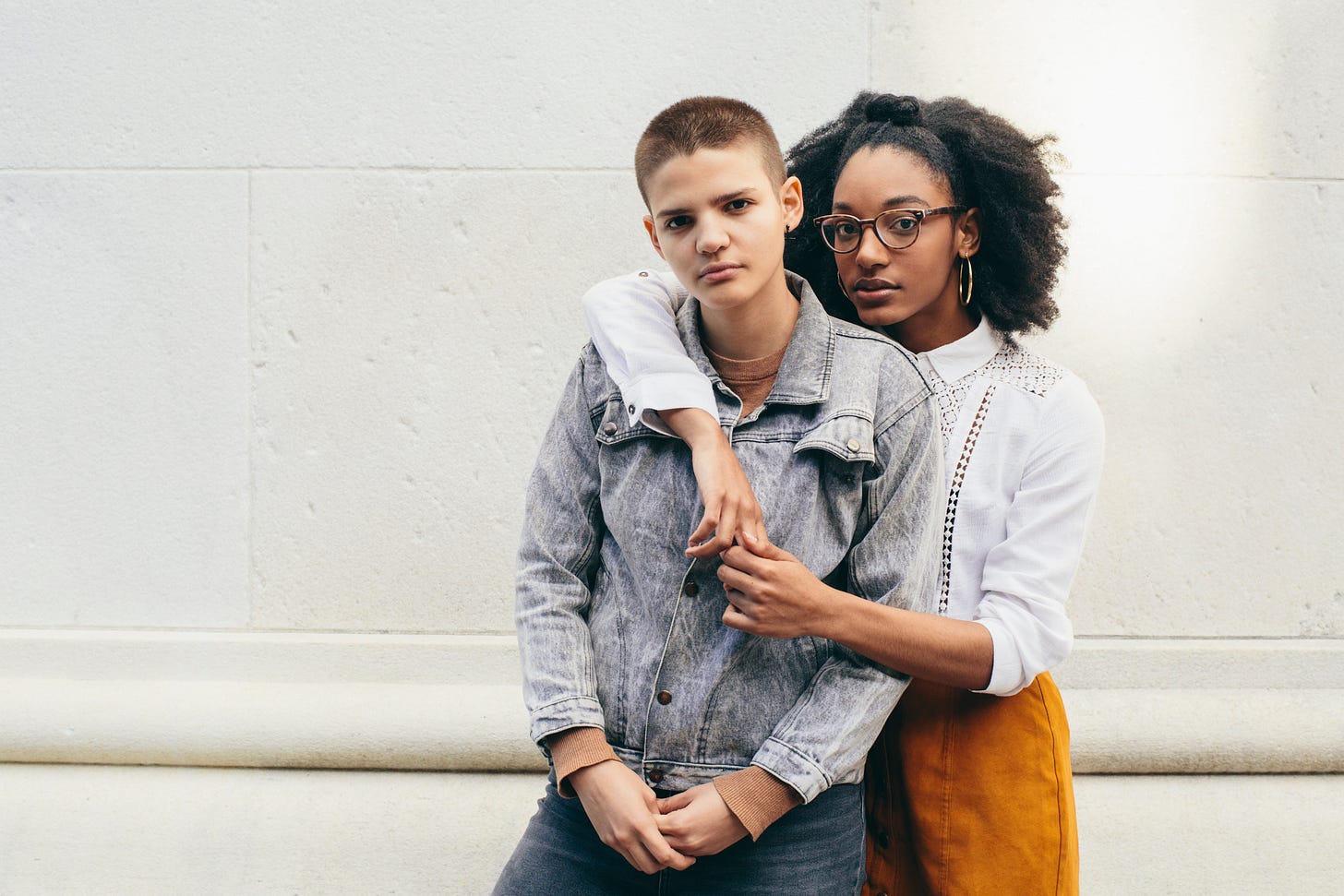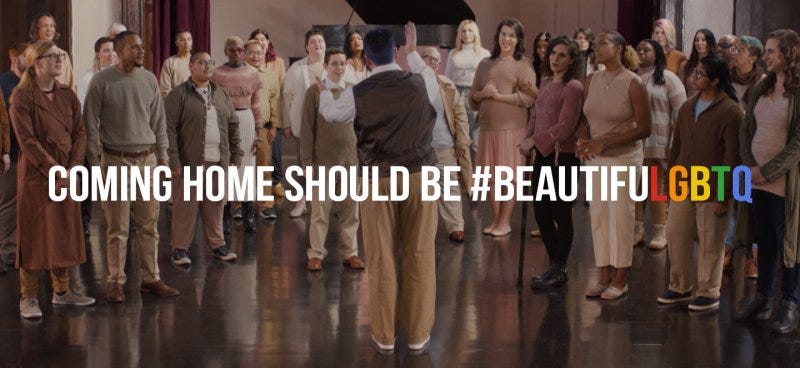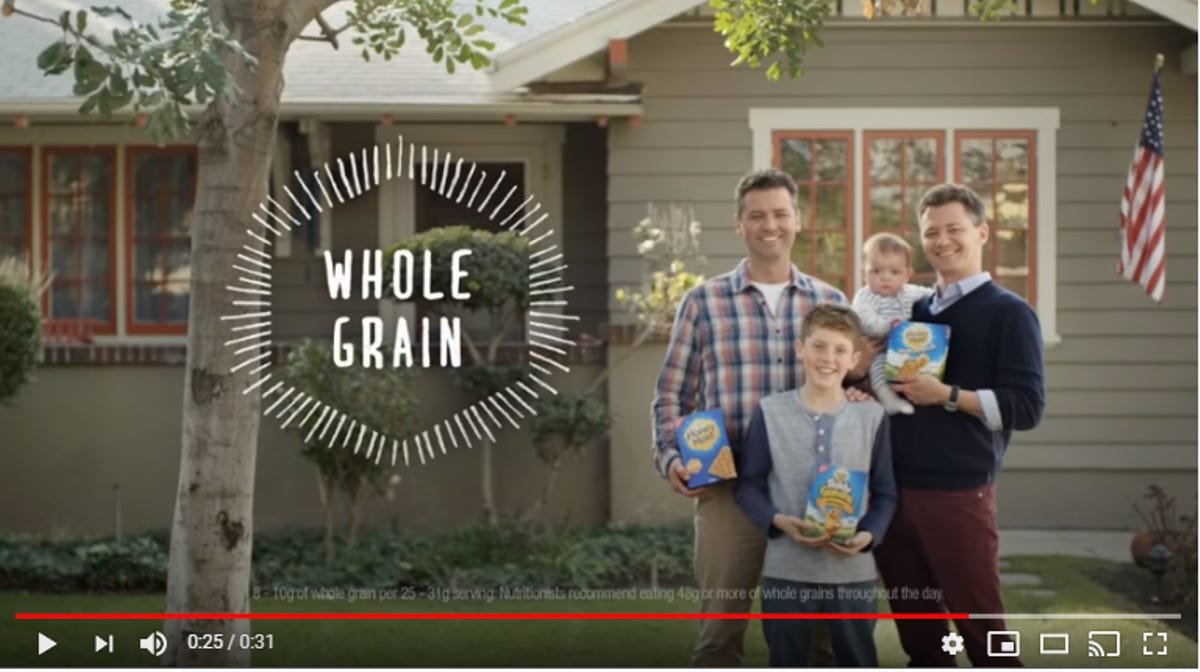Audiences Uncovered: LGBTQ+

Hi everyone! Alana, again (she/her/hers). Six months of 2020 has felt like a decade, yet here we are in June…still 2020. And although 2020 has turned out to be the #unprecedented year of all unprecedented years, we still have some reasons to celebrate. June is Pride month, and this year it rolls in riding a tidal wave of increased consciousness and commitment to equality for all. Although we still have a long road ahead of us, we’re seeing a greater bend in that long-heralded arc towards justice, even if only slightly.
97% of surveyed LGBTQ+ Americans said they were proud to be a member of the LGBTQ+ community, with over 80% regularly reading or viewing LGBTQ+ media and two-thirds volunteering with at least one LGBTQ+ organization. That’s a lot of PRIDE — and not just in June! — giving marketers ample opportunity to connect and engage with this audience around the issues that matter most.
This newsletter is 1,500 words, approximately an 8 minute read.

via IPGLBT
By the numbers
82%: of LGBTQ+ respondents believe that including LGBTQ+ people in a brand’s ads reflects the brand’s value for all kinds of diversity (GLAAD)
85%: believe it reflects the company’s commitment to offering products to all types of customers (GLAAD)
2-in-3: LGBTQ+ YouTube viewers said they are more likely to buy from a brand that includes LGBTQ+ and messages in their ads (Google)
72%: LGBTQ+ respondents who are more likely to purchase when a brand advertises in LGBTQ+ media (CMI)
2006: The first “coming out” video was uploaded to YouTube, launching a wave of other videos designed as a way to empower one’s self, let others know they’re not alone, and inspire and draw courage from a community of caring viewers (Google, HuffPost)
Young and proud

LGBTQ+ Americans skew significantly younger than the general population, likely due to having more resources and protections than older generations, allowing them to understand and express their own identities more freely. Of Americans who identify as LGBTQ+, nearly half (47%) are Zillenials (ages 18-29). As a proportion of each age cohort, young Americans (12%) are more than twice as likely as Americans of any other age group to identify as LGBTQ+.
Younger Americans also lead the way in terms of speaking out and conscious consumption. 67% of young adults in the U.S. do not believe that small business owners should be allowed to refuse service to LGBTQ+ people for religious reasons, compared to 60% of Americans overall and 53% of seniors. And 45% of consumers under 34 years old say they're more likely to do repeat business with an LGBTQ+-friendly company. Of them, more than 54% also say they'd choose an equality-focused brand over a competitor.
This is valuable intel for brands targeting younger consumers, like ACUVUE, Clean & Clear, and Neutrogena, who are not only more likely to demand brands be vocal around LGBTQ+ allyship but also more likely to be LGBTQ+ themselves.
Modern family

According to the most recent Community Marketing & Insights (CMI) LGBTQ+ Community Survey, 32% of gender-expansive (transgender and/or non-binary) community members, 31% of lesbian and bisexual women and 14% of gay and bisexual men have a child of any age. However, notably, the percentages are much lower for those with children under age 18. The research also uncovers a high percentage (17%) of LGBTQ+ people with grandchildren. This has important implications because parents of minor children tend to be the primary focus within consumer marketing, and parents of older children or grandparents are rarely depicted.
Beyond the binary
CMI research reminds us that not all relationships are defined as binary (same-sex or opposite-sex couple). Many LGBTQ+ community members are in a relationship where at least one partner identifies as other than male or female so when discussing or depicting LGBTQ+ partnerships, marketers should be careful to use language and imagery that is inclusive and respectful.

‘How to pronoun’
To that end, many individuals and corporations are now tasking themselves with being better about acknowledging preferred gendered pronouns, including UM, who recently encouraged all employees to identify their preferred pronoun in their signature, giving visibility to the issue and allyship to those who are often misgendered. Discussing and correctly using gender pronouns sets a tone of respect and solidarity with transgender and non-gender conforming people and the LGBTQ+ community overall.
For some great guides on pronouns and the dangers of misgendering, please see the below resources:
In this together
According to recent Harris Poll data, multicultural consumers are more likely than white consumers to expect brands to make a positive difference on LGBTQ+ rights.

Communities of color are also more likely to say that LGBTQ+ rights will be more important to them personally moving forward, suggesting a high degree of connectivity between LGBTQ+ interests and the interests of POC in dismantling injustice.
Intersectional identities

Additionally, compared to all Americans, LGBTQ+ Americans themselves are more likely to be multicultural (131 index) and less likely to be white (82 index), meaning that we cannot discuss LGBTQ+ audiences without also considering the many intersectional profiles LGBTQ+ people also identify with.

#BlackTransLivesMatter
Recent attention has been given to the #BlackTransLivesMatter movement, designed to give visibility to the unique perspective of black gender expansive populations (e.g. transgender, non-binary, etc.) who bear the burden of both racial and gender normative discrimination and violence. Transgender women of color, are at an especially high risk. According to the Human Rights Campaign, in 2020, at least 14 transgender or gender non-conforming people have been fatally shot or killed by other violent means, the majority of whom are of color. As we live into our commitment to a more just and socially responsible world, let us also be conscious of the fact that for some members of the LGBTQ+ community, identity is a complex layering of discrimination and privilege, and that there are others who belong to multiple discriminated-against communities who may be even more susceptible to acts of hate and violence and deserving of our attention.

(As seen in Raleigh, NC/photographed by the author)
Category and content consumption
LGBTQ+ Americans are heavily involved in many of the consumer categories we support.

They also are avid consumers of media — over-indexing on radio and internet and on par with the general market on print, outdoor, and TV — providing multiple interception opportunities across various touchpoints.

Additionally, 2017 YouGov data reveals LGBTQ+ consumers are more likely than the average consumer to act after seeing an ad. When asked if they search on their phone for the products and services they see advertised on posters and billboards, 43% of LGBT consumers in the U.S. say they do, compared to 33% of Americans in general, a compelling example of how ad dollars work harder with this audience.
“Good for business and good for the world”

It has long been established that media has a large role in solidifying cultural norms. Representation matters not only in marketing to specific audiences but also in creating social change by making everyone more accepting of people different from themselves. A recent study by GLAAD/P&G found that non-LGBTQ+ Americans who had been exposed to LGBTQ+ people in media were more likely to accept LGBTQ+ people and be supportive of their issues in comparison to respondents who had not been exposed to LGBTQ+ people in the media.
Additionally, the study found that non-LGBTQ+ consumers exposed to LGBTQ+ people in the media became more comfortable with LGBTQ+ people in their own daily lives, giving both publishers and marketers a far more important role to play than just selling goods or services…however, it does help with that too. (see previous section: By the numbers and below section: Halo effect). As GLAAD President & CEO Sarah Kate Ellis so eloquently put it “including LGBTQ[+] people in ads, films, and TV is good for business and good for the world.”
Online video leads the way

Halo effect

LGBTQ+ focused ads don’t just resonate with LGBTQ+ viewers. As more and more attention is focused on equal rights for the LGBTQ+ community—namely, marriage equality and workplace protections and diversity—it's influencing how the total market makes decisions too.
Progressive audiences of all backgrounds — especially younger people (see previous section: Young and proud) — are supportive of brands with sexuality/gender identity inclusive communications. According to Google research, women of all sexual orientations on YouTube prefer LGBTQ+-friendly ads. Nearly 60% of millennial women on YouTube say they are more likely to remember a brand that’s LGBTQ+-friendly. Women are also more likely to engage with a brand that features LGBTQ+ people or themes in their ads.
Beyond inclusive imagery in traditional branded ads, brands can also capture spillover audiences by partnering with LGBTQ+ content creators, who have proven to have loyal followings and are highly engaging among all consumers, regardless of their sexuality or gender identity. Google reports shares of videos by LGBTQ+ creators have tripled over the past two years globally, solidifying the overarching impact of LGBTQ+ culture on the total market.
Brand examples
Pantene, Coming Home Should Be #BEAUTIFULGBTQ

Gillette, First Shave, the Story of Samson

Honey Maid, This is Wholesome

Honey Maid, Love (created in response to the ensuing backlash of “This is Wholesome”, allowing Honey Maid to, again, show its commitment to the issues of diversity and equality, as well as its support for the LGBTQ+ community.)

Mastercard, Acceptance Street

J3 | UM | IPG Pride

Recorded Panels and Discussions
IPG Merge Intersectionality Discussion with Angelica Ross
IPGLGBT “What Would You Do” Webinar (password: PFLAG2020, expires Sept 1)
Extra credit reading
GLAAD Media Reference Guide (GLAAD)
GLAAD Where We Are on TV (GLAAD)
13th Annual LGBTQ+ Community Survey (CMI)
Why many businesses are becoming more vocal in support of LGBTQ rights (HBR)
The queer black history of rioting (Refinery29)
Universal love (McCann NY)
As Supreme Court affirms workplace rights, LGBTQ Americans have a long way to go for economic equality (MarketWatch)
Mastercard’s ‘True Name’ supports transgender and non-binary consumers (WARC)
